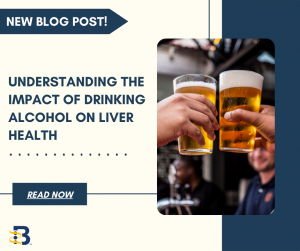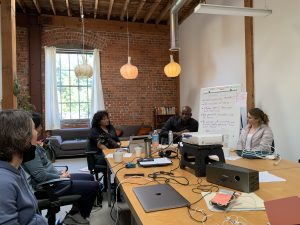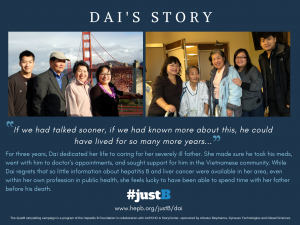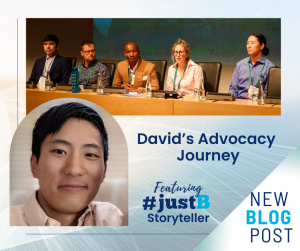
David is living with hepatitis B, and he spoke about empathy and mental health as a panelist at the World Hepatitis Summit (WHS) 2024
Another World Hepatitis Summit (WHS) has come and gone, this time in Lisbon, Portugal. I previously attended the 2022 summit in Geneva and spoke during the Youth Can’t-Wait and Closing Sessions. I would like to give my thanks to the wonderful people at the World Hepatitis Alliance, for allowing me to travel and speak at this year’s summit as well.
I spoke during a newly created session called Hepatitis and Mental Health. During this session, a video I made in collaboration with the WHA last year, was played before I spoke. It is part of the WHA “I can’t wait” series of videos, which showcase patient advocates and their journeys with patient advocacy and why they can’t wait for a world without hepatitis. I, the dedicated and powerful Shabana Begum of the UK, and the courageous and vocal Shaibu Issa of Tanzania are the first to be featured in these videos.
I can’t wait… these words evoke dire urgency. During this summit, I felt and heard the urgency from many of the speakers, advocates, and attendees. From the opening session, it was emphasized that the world DOES have the tools and resources but DOES NOT have the required amount of political and social will to eliminate viral hepatitis by 2030. The need for person-centered and culturally appropriate approaches as being critically important was also highlighted.
These declarations capture the moment the viral hepatitis community is currently in. Time is slipping away by the day and the people who suffer from viral hepatitis, hepatitis B and D included, cannot continue to wait in silence as they have been. Deaths from hepatitis B are still alarmingly high each year. These statistics highlight a problem of stigma and discrimination that presents differently depending on where you are located or who you are talking to. Stigma and discrimination can cause mental health problems and prevent millions of people living with hepatitis from finding their voice, feeling comfortable sharing their story, and being diagnosed. Without solving this multi-faceted problem, the goal of eliminating viral hepatitis by 2030 is just an empty platitude.
Having the privilege and platform to speak about hepatitis and mental health during this summit was very important to me. My struggles with hepatitis B and my mental health struggles are interconnected in so many ways. That is also true for so many other patients who have struggled with poor mental health. Long before I started my patient advocacy journey, I felt voiceless. Long before I ever talked publicly about my mental health struggles, I felt voiceless.
Empathy is a crucial piece of the puzzle for how we give those who feel voiceless the greatest opportunity to find their voice, regardless of where they are from or the stigmas that surround them. We must be empathetic when creating policies, action plans, and declarations. So many millions of people are left undiagnosed, untreated, and voiceless because of fear of the societal, associative, and personal stigma that they will go through if they seek out a diagnosis or talk about their status openly. There is still so much misinformation surrounding hepatitis and the only feasible way to fight this is by amplifying the voices of those who speak the truth about hepatitis with empathy, cultural sensitivity and appropriate.
The symptoms of poor mental health exacerbate this feeling of voicelessness. After five years of advocacy, over a decade of therapy, and five years of being on a consistent treatment for my hepatitis B, I still struggle with clinical depression and anxiety. I will live every day with depression and anxiety in varying degrees for the foreseeable future. My mental health started to trend downward late last year. I had to find the strength to start an antidepressant medication and give it an honest try. I can happily say, that today and every day after will mark the longest I’ve been on an antidepressant (almost six months now), and I can report that it is helping me manage my mental health and to continue managing my hepatitis.
I say all of this to highlight the connection between times in my life where I have actively been taking steps to manage my mental health and my hepatitis B. These periods overlap with each other, and they have one important thing in common. Empathy for myself and others. This is one of the strongest coping tools I have to manage my hepatitis B and my mental health. Patient health outcomes are linked to the state of their mental health and the tools and resources they are given to help manage it.
After attending this World Hepatitis Summit, I feel a calling to act with more urgency. This isn’t an easy task. For me, it’s one of the most challenging aspects of advocacy. I have such a natural tendency to self-talk in very judgmental and negative terms. I sometimes think I’m a terrible person for not doing more and taking more time to learn how to become a more capable and productive advocate. I ask myself why I’m not having more conversations, learning about others’ perspectives, and potentially teaching someone or setting them on a path of changing their minds about hepatitis and mental health.
The desire to grow more as an advocate and connect more with others is within me, but the key to taking more action is to meet myself where I am currently and to practice self-empathy. When I speak to myself with empathy, kindness, and encouragement, I am much more likely to grow and make a positive change, even though mental health struggles.
Most people in the world can relate to or know someone who has struggled with their mental health. This commonality between people can be a powerful tool if wielded with empathy instead of fearmongering and focusing on the most rare, violent, and negative aspects of mental health struggles. These stories fill the public, media, social media, and political discourse and create more layers of stigma (public, associative, self, provider). Changing this narrative will be a monumental undertaking but to use one of my favorite quotes, “The best time to start was yesterday. The next best time is today.”


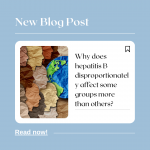
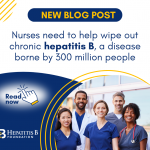
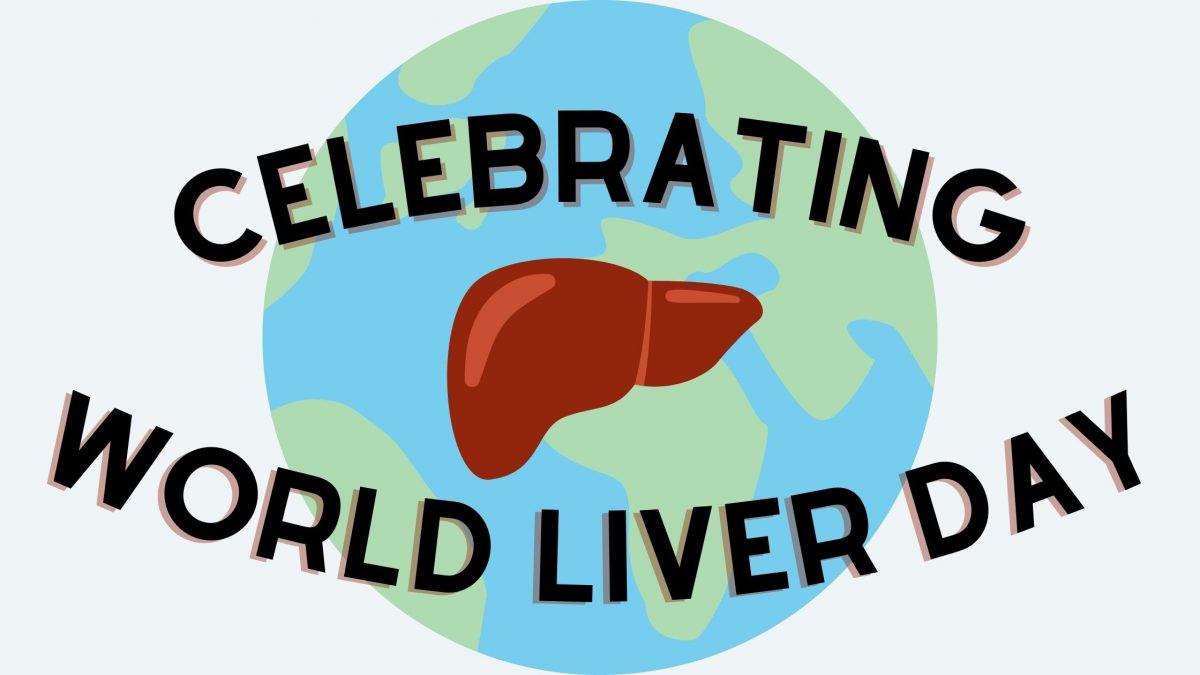




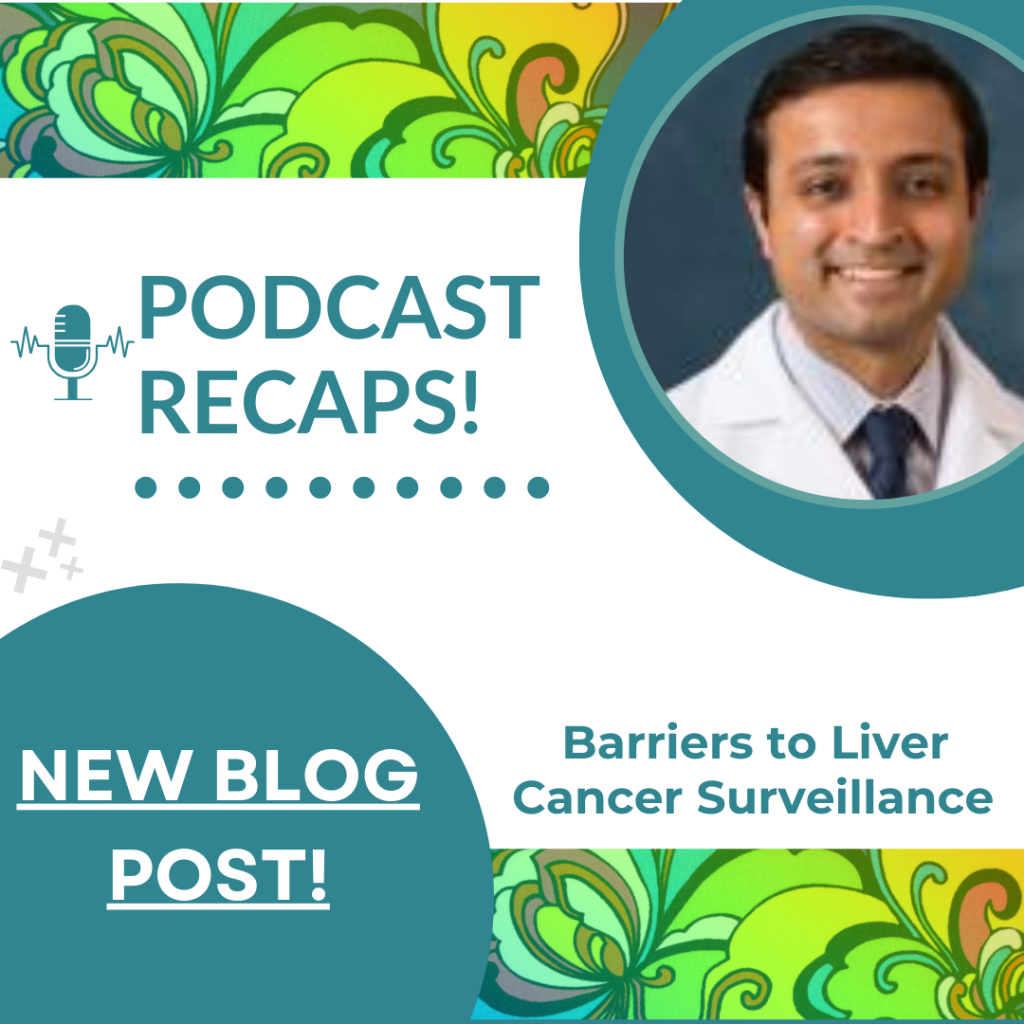
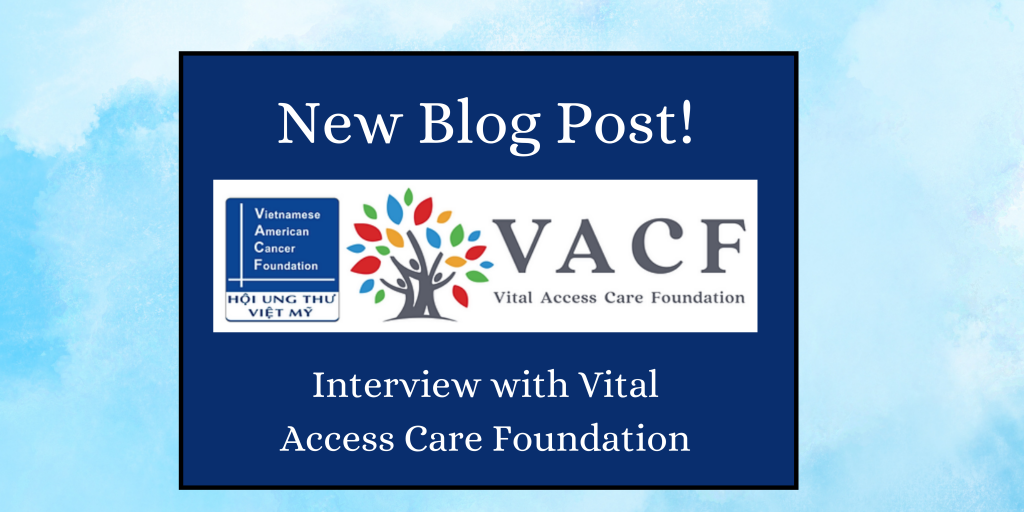
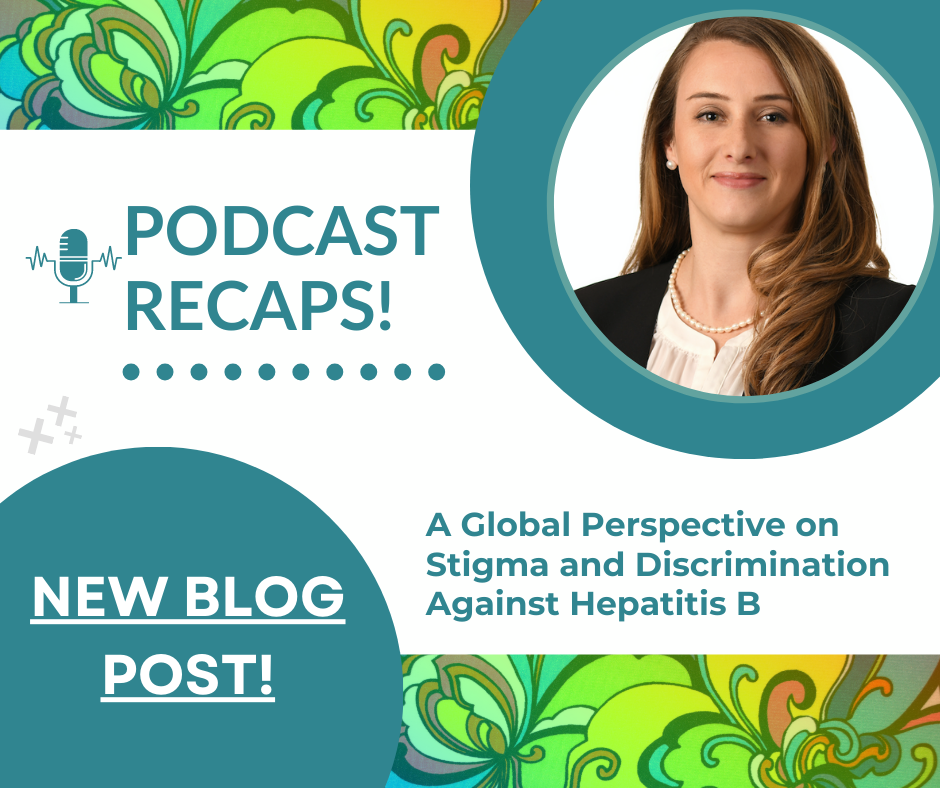
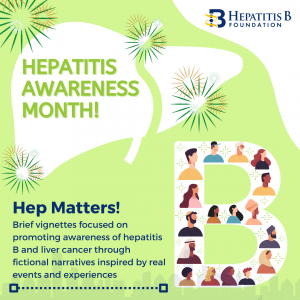

 Amina asked her doctor how she could get rid of this virus. Her doctor explained to her that there is no cure for hepatitis B, but antiviral treatment options do exist. While she may not be able to completely get rid of the virus, she can help protect herself from serious conditions such as hep B related cirrhosis or liver cancer with treatment. Amina’s doctor encouraged her to get treatment to prevent any serious problems from occurring. He also mentioned that treatment for hepatitis B is safe and effective. This did not make any sense to Amina. She thought to herself that if a treatment wouldn’t cure her of the disease, then there is no point in taking it. She felt healthy and did not show any symptoms. After the doctor suggested treatment options, she said that she will wait for the cure.
Amina asked her doctor how she could get rid of this virus. Her doctor explained to her that there is no cure for hepatitis B, but antiviral treatment options do exist. While she may not be able to completely get rid of the virus, she can help protect herself from serious conditions such as hep B related cirrhosis or liver cancer with treatment. Amina’s doctor encouraged her to get treatment to prevent any serious problems from occurring. He also mentioned that treatment for hepatitis B is safe and effective. This did not make any sense to Amina. She thought to herself that if a treatment wouldn’t cure her of the disease, then there is no point in taking it. She felt healthy and did not show any symptoms. After the doctor suggested treatment options, she said that she will wait for the cure.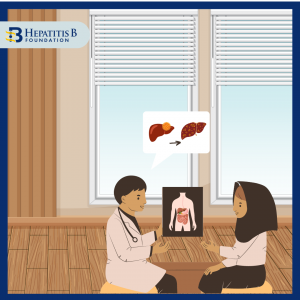 After moving to the U.S., Amina had gotten busy with school and work and did not follow up with her primary care doctor for years. Amina experienced stomach pains from time to time but they often went away on their own. On one occasion, her stomach pain worsened. She had to take a few days off from work to get better using home remedies, but they didn’t help. Finally, she went to the doctor’s office to learn more. She discovered that she had liver cancer. Her doctor referred her to a hepatologist (a liver specialist) for further treatment.
After moving to the U.S., Amina had gotten busy with school and work and did not follow up with her primary care doctor for years. Amina experienced stomach pains from time to time but they often went away on their own. On one occasion, her stomach pain worsened. She had to take a few days off from work to get better using home remedies, but they didn’t help. Finally, she went to the doctor’s office to learn more. She discovered that she had liver cancer. Her doctor referred her to a hepatologist (a liver specialist) for further treatment. 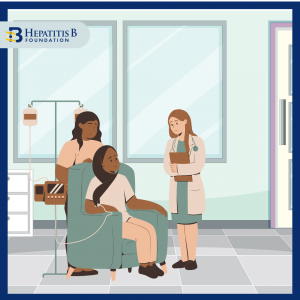 The hepatologist explained to Amina that hepatitis B can lead to liver cancer without monitoring and treatment. Even though a cure is not available, treatment options do exist, and they help in slowing and preventing serious liver disease, liver damage or liver cancer. If Amina had started antiviral treatment on time, she could have saved her liver. The doctor recommended chemotherapy for Amina to treat the cancer. Not only did her medical bills go up but Amina felt physically and mentally exhausted by the procedures. She advocates for everyone living with hepatitis B to get treatment if they need it and not wait for the cure. She also participates in advocacy efforts to make treatment options more affordable for people living with hepatitis B.
The hepatologist explained to Amina that hepatitis B can lead to liver cancer without monitoring and treatment. Even though a cure is not available, treatment options do exist, and they help in slowing and preventing serious liver disease, liver damage or liver cancer. If Amina had started antiviral treatment on time, she could have saved her liver. The doctor recommended chemotherapy for Amina to treat the cancer. Not only did her medical bills go up but Amina felt physically and mentally exhausted by the procedures. She advocates for everyone living with hepatitis B to get treatment if they need it and not wait for the cure. She also participates in advocacy efforts to make treatment options more affordable for people living with hepatitis B.